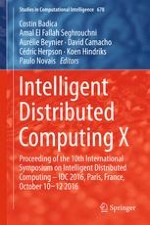2017 | Book
Intelligent Distributed Computing X
Proceedings of the 10th International Symposium on Intelligent Distributed Computing – IDC 2016, Paris, France, October 10-12 2016
Editors: Costin Badica, Amal El Fallah Seghrouchni, Aurélie Beynier, David Camacho, Cédric Herpson, Koen Hindriks, Paulo Novais
Publisher: Springer International Publishing
Book Series : Studies in Computational Intelligence
